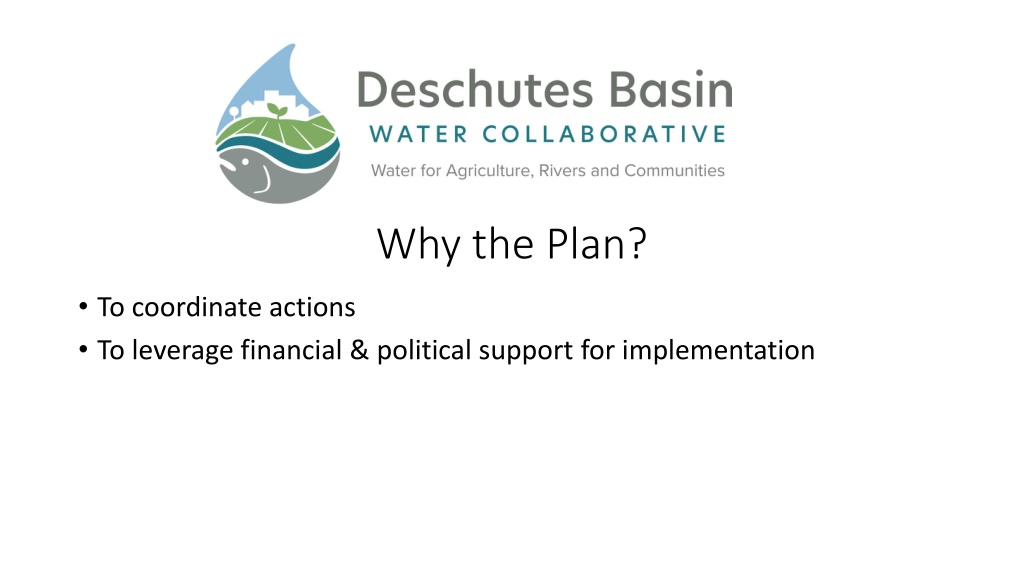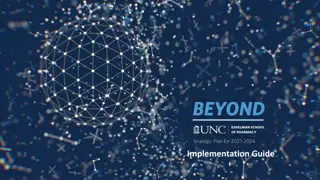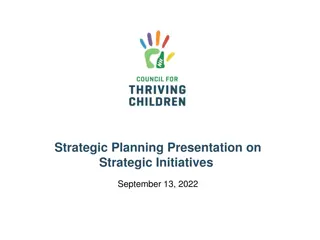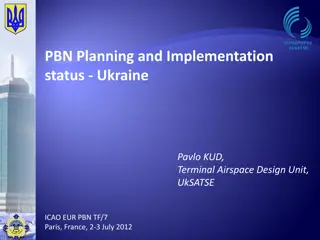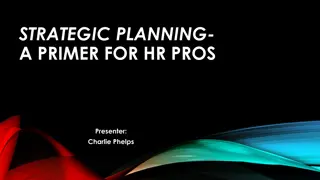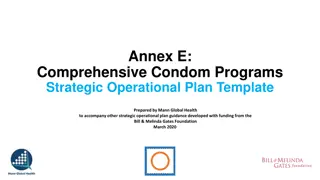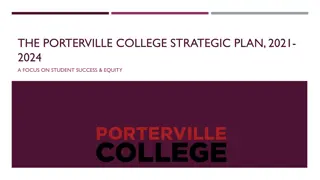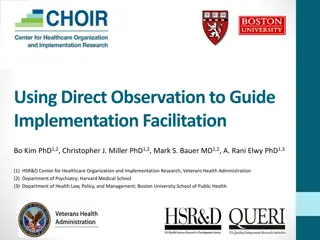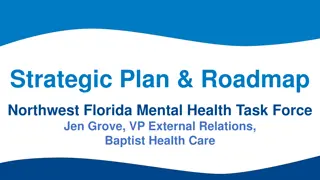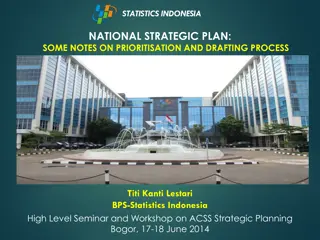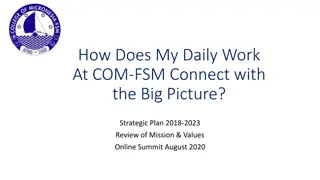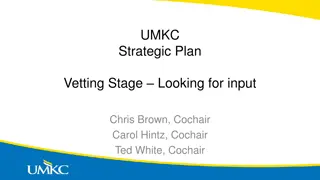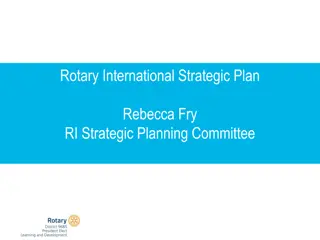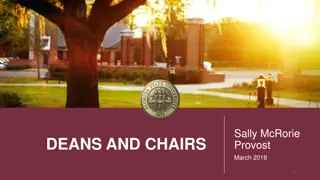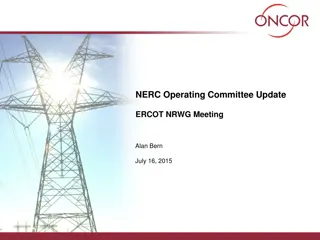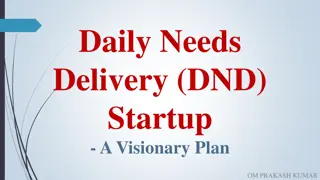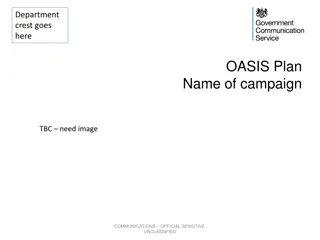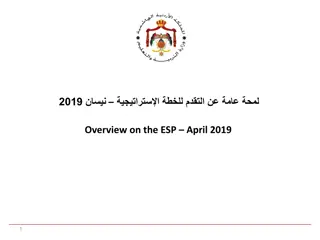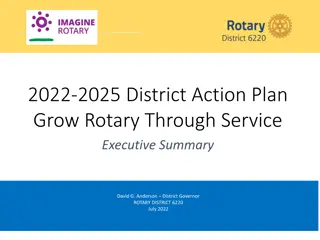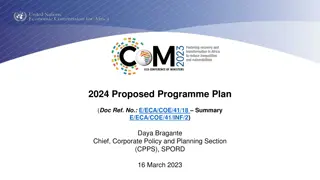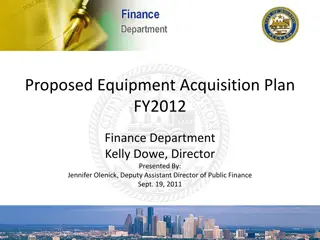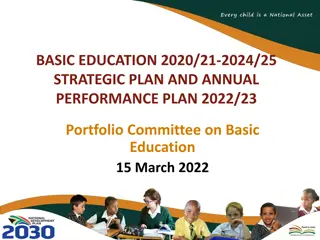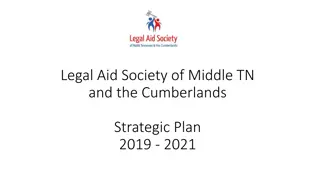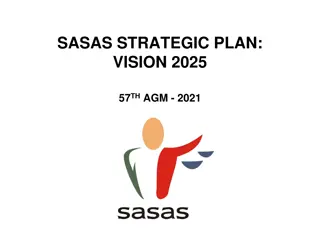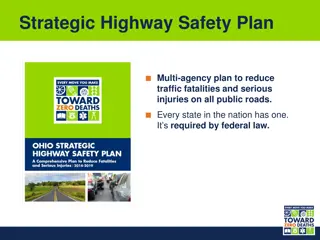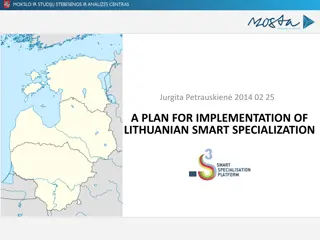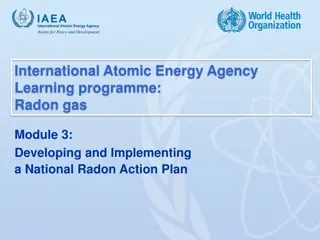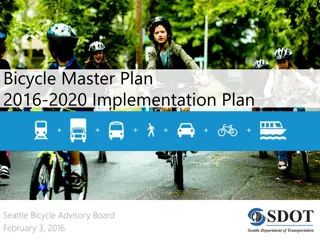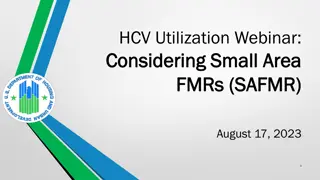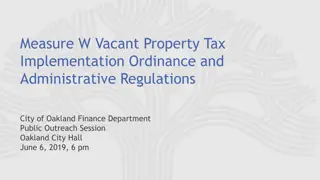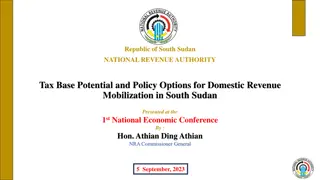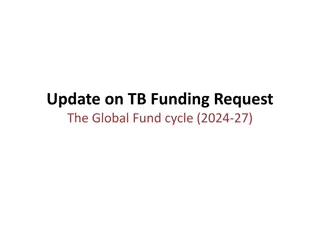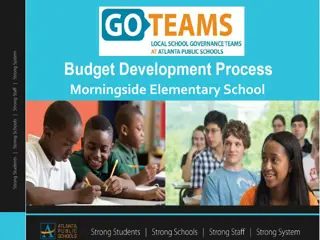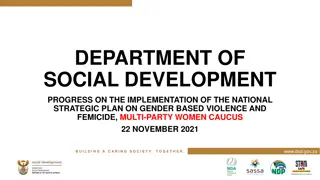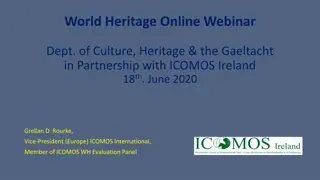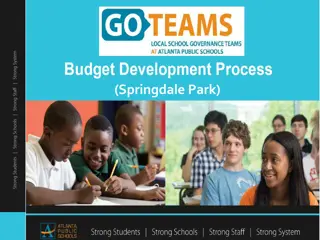Strategic Plan for Implementation
Coordinating actions to leverage financial and political support, the plan build process involves workshopping key chapters and drafting plan content for review and refinement by the planning team and working group. Principles for developing the implementation plan focus on maximizing outcomes, addressing barriers, and supporting partners. Key questions revolve around cost-effectiveness and tools integration, while pathways for implementation highlight various tools and integrations for effective water management. Example implementation actions showcase strategies for impactful results.
Uploaded on Sep 21, 2024 | 0 Views
Download Presentation

Please find below an Image/Link to download the presentation.
The content on the website is provided AS IS for your information and personal use only. It may not be sold, licensed, or shared on other websites without obtaining consent from the author. Download presentation by click this link. If you encounter any issues during the download, it is possible that the publisher has removed the file from their server.
E N D
Presentation Transcript
Why the Plan? To coordinate actions To leverage financial & political support for implementation
Plan Build Process Workshopping elements of chapters 4 (strategies) and 5 (implementation plan) o Planning Team review, then Working Group workshops o Staff then able to generate very draft Plan content based on workshop outcomes Next step will be Plan content review: o chapter by chapter o Planning Team review/refinement -- including proposing ways to address unresolved issues o Outcome comes to full Working Group for review/refinement o We will get as far as we can in resolving issues. Final Plan will be a long/technical version + a shorter summary version
Principles for Developing Implementation Plan Aspirational and Functional Maximizes Outcomes Balances Outcomes between Needs Cost-Effective Recognizes complexity and addresses necessary barriers Supportive of partners
Question #1 Cost-effectiveness lens Are we integrating tools for cost-effective timely outcomes? Are we prioritizing actions/addressing barriers to enable this?
Pathways color coded by demand: Tools Integration Water moved instream to Middle Deschutes Water moved within district(s) for patron supply Generating GW mitigation from other pathways Water moved to NUID and Upper Deschutes On farm/private laterals Water savings moved to: District(s)/patron supply NUID and Upper Deschutes Instream to Middle Deschutes Canal piping Irrigation district projects, implemented or planned Integrations: Operational Benefits: Cost effective Maximize conservation opportunity Maximize voluntary programs Canal piping on- farm/private laterals Measurement Canal piping & on-farm water marketing Water marketing Annual Water Leasing Program Instream lease or transfer Groundwater Mitigation Program Pilot intra-district temporary transfer Inter-district forbearance agreement Temporary transfer Permanent transfer Case Studies: Smith Rock-King Way J Lateral and/or G-4 Lateral TSID
Example Implementation Actions Example Implementation Actions Smith Rock Smith Rock- -King Way Geography King Way Geography Pipe COID Main Canal (completed 2022) Pipe x miles of COID laterals Pipe x miles of private laterals Upgrade 70% remaining flood irrigation to sprinkler Increase water leasing by 25% 60 cfs delivered to NUID in summer; protected instream in Upper Deschutes in winter $/timeline Priority Enabling Actions Secure funding for increased measurement Fund district incentive program for private lateral piping
Question #2 Balancing Lens Are we balancing outcomes between instream, agricultural and municipal needs?
Question #3 Balancing Lens Are we balancing instream outcomes between reaches (Upper Deschutes; Middle Deschutes; Tumalo Creek) and/or clearly articulating approach
Question #4 Balancing Lens Are we assessing plan impacts on surface water and groundwater? Example data gap Recommend development of a tool to help understand impacts of various basin-scale water management scenarios on surface water & groundwater
Question #5 Balancing Lens Are we integrating flow restoration with habitat work and water quality goals? Example: Upper Deschutes habitat-flow integration Example: Tumalo Creek flow restoration to improve Middle D temperatures
Question #6 Barriers Lens Have we sufficiently addressed barriers to enable scaling outcomes?
Question #7 Partner lens Does our plan set implementation partners up for success? Example: Does it give irrigation districts the tools it needs to meet its water delivery goals while implementing projects? Example: Have we articulated clear pathways for cities to ensure future water supplies?
Question #8 Outcomes Lens Does our plan meet basin water needs?
Implementation Plan Framework Near-Term, Medium-Term & Long-Term Packages of Actions Costs Outcomes Priority enabling actions Data gaps/recommendations for further investigation Adaptive management
